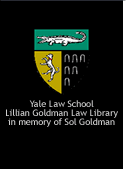|
Multimedia Presentations
Click on the links to view videos and for additional reference materials.
|
THE CASE OF CHRIS HANI AND THE STANDARD FOR AMNESTY
This video examines the dramatic amnesty hearings of Janusz Walus and Clive Derby-Lewis, two members of the now extinct Conservative Party. In 1993, Walus and Derby-Lewis assassinated Chris Hani, leader of the South African Communist Party and African National Congress who was second only to Nelson Mandela in popularity polls at the time of his death. Walus and Derby-Lewis were serving life sentences for the murder when they applied to the TRC for amnesty arguing that their act was politically motivated
produced by ANDRE GREENAWALT and MARIA BURNETT
SMIL - Additonal resources |
VIOLENCE AGAINST WOMEN
This video presentation explores the experience of women during apartheid and as witness before South Africa’s Truth and Reconciliation Commission. The video presents the stories of four women: Kate Serokolo, Zubeida Jaffer, Shirley Gunn, and Phila Ndwandwe. Using their stories as a lens, this presentation looks critically at the TRC and the ways in which it failed to develop a complete and accurate narrative account of the experiences of women in South Africa.
produced by AMBIA HARPER and MERON HADERO
SMIL - Additonal resources
|
ROLE OF THE LEGAL PROFESSION
This video examines the case of Brian Mitchell, a police commander who massacred eleven people attending a wake in the small community of Trust Feed on December 2, 1988. The presentation provides a nuanced look into the events of and motives for the killing, the government’s strategy of fomenting internecine conflict between black resistance movements, and Mitchell’s emergence from death row to be granted amnesty in 1996. It concludes by following Mitchell back to Trust Feed in 1997, his plea for forgiveness, and his efforts ever since to raise funds and help restore the infrastructure and spirit of the torn community
produced by YUVAL MILLER and ROB PARKER
SMIL - Additonal resources |
STRUCTURE AND PURPOSE OF THE SOUTH AFRICAN TRC
This video examines the structure of the South African Truth and Reconciliation Commisson and its purpose. The presentation is divided into 3 distinct parts highlighting the functions of each role. The video focuses on the people involved in the TRC process, how it was created and designed to facilitate the needs of the victims, applicants and participants. The presentation also provides detailed look at the step by step process of theTRC with in-depth stories and interviews.
produced by
TARA HELFMAN and BORIS SOKUROV
SMIL - Additonal resources |
VICTIM- PERPETRATORS MEETINGS
This media presentation examines the face-to-face meetings of victims and perpetrators facilitated, both directly and indirectly, by the proceedings of South Africa’s Truth and Reconciliation Commission (TRC). The video presents the stories of three apartheid survivors, Ashley Forbes, Tshidiso Motasi, and Dawie Ackerman, and provides background information regarding their traumatic experiences. Through an exploration of these victim-perpetrator meetings as contextualized by further information, this presentation addresses issues involved in the relationship between victim and perpetrator. These issues include topics such as the importance of recognition, the question of support, and the role of forgiveness in the TRC.
produced by WENDY PHILLIPS, MEGUMI KAYAKI-TANIGUCHI and BIJAL SHAH
SMIL - Additonal resources
|
PERSPECTIVES ON RECONCILIATION
This media presentation uses the concept of reconciliation to evaluate the South African and Guatemalan truth commissions. The presentation compares the truth commissions along several dimensions and then asks normative questions about whether each model was successful in fulfilling its mandate, using the concept of reconciliation as a proxy for the relative success of the truth commissions.
Produced by JAEL HUMPHREY-SKOMER and SHIRIN BAKHSHAY
SMIL - Additonal resources |
THE MEDIA UNDER APARTHEID
This presentation examines the role of the media under apartheid. The media in South Africa was multidimensional, to say the least. This video begins with a montage of broadcast coverage from the apartheid era, which demonstrates the absurdity of some coverage of the turmoil in that nation and also illustrates the culture of fear that marked that era. The South African media played an important role in maintaining apartheid in South Africa. Additionally, media organizations were penetrated by government agents and other journalists occasionally worked as paid government informants. Also, the internal structure of the media was marked by racism and segregation and a lack of true commitment to ending apartheid.
produced by JUDE GEIGER
SMIL - Additonal resources |
THE MEANINGS OF“POLITICS” IN APARTHEID SOUTH AFRICA
Applicants seeking amnesty for human rights violations had to prove that their actions had a “political objective.” This video presentation explores some of the ambiguities confronted by the Amnesty Committee in their attempt to distinguish violence in the service of politics from violence that was motivated either by simple racism or by self-interest. The Committee used a definition of “politics” that sharply contrasts with understandings advanced in explorations of apartheid history by other institutions, such as the popular media.
produced by
PRAVEEN KRISHNA and
MICHAEL YARBROUGH
SMIL - Additonal resources |
WINNIE’S CASE
This video presentation examines the special hearings regarding the
alleged crimes of Winnie Madikizela-Mandela and the group of youths
associated with her, known as the Mandela United Football Club (MUFC).
In particular, this presentation focuses on the abduction, torture and
murder of 14-year old activist Stompie Seipei—-crimes in which Winnie
and the MUFC were implicated—-and the broader questions raised by an
attempt to hold a figure of Winnie’s magnitude accountable for human
rights abuses.
produced by
SAMANTHA CHAIFETZ,
JEREMY ROSSMAN and
PATRICK KEEFE
SMIL - Additonal resources |
|
|
|



